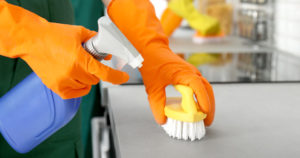

“Continuous technological advances in the manufacturing industry have allowed food manufacturers to achieve high levels of efficiency and productivity, developing new and creative ways of improving process controls, so giving a much-needed boost to the economy and narrowing levels of variation within mass manufacturing.”
“Whilst this has provided fantastic advantages in product supply, it has created challenges in hygiene management in the processing environment as automated equipment often has access limitations, lower levels of internal maintenance and the system itself is often more reliable in itself.”
Her advice to ensure maximum hygiene levels in automated food manufacturing settings includes examining equipment design, access to the equipment, cleaning chemicals, cleaning tools and more.
1. Design of Product Contact Equipment – be sure hygienic design was taken into consideration and that each part belongs in a food manufacturing environment
2. Cleanability – equipment should provide user with logical and well-thought cleaning methodology, if not contact the manufacturer for support and collaboration
3. Each Piece of Equipment is Unique – each machine, even if identical, will have specific characteristics that must be considered when developing a cleaning schedule
4. Automation Goes Further than Manufacturing – utilize available technology like performance monitoring, reporting tools, predictive maintenance, continuous hygiene indicators and hygienic tools to support cleaning efforts
5. Suitability of Chemicals – involve your chemical supplier and work together to evaluate new/existing equipment and chemical compatibility
6. Combine Maintenance with Hygiene – training maintenance and engineering stafff in hygienic design, hygiene routine, and relevant hazards will help develop a maintenance routine that can also minimize cross contamination
You can read the full article by visiting Insight.Hillbrush.com.
